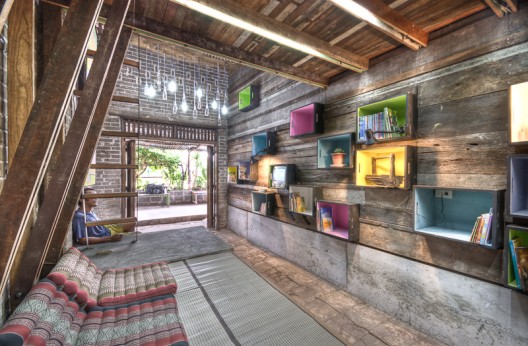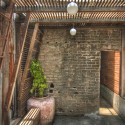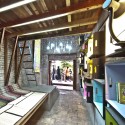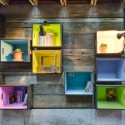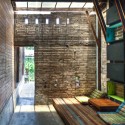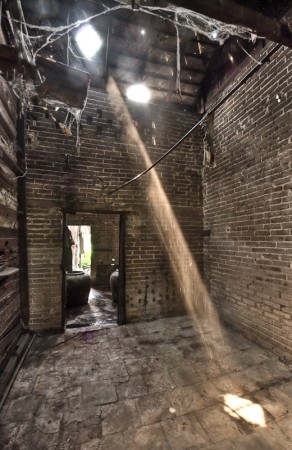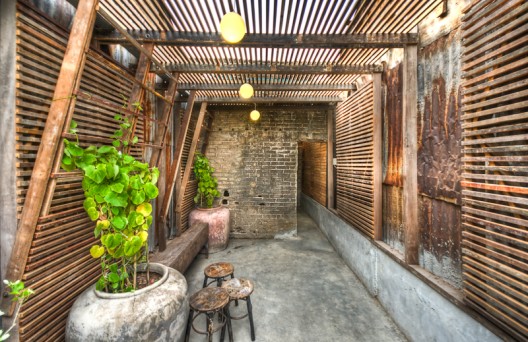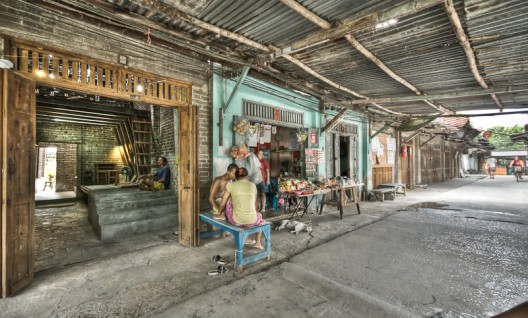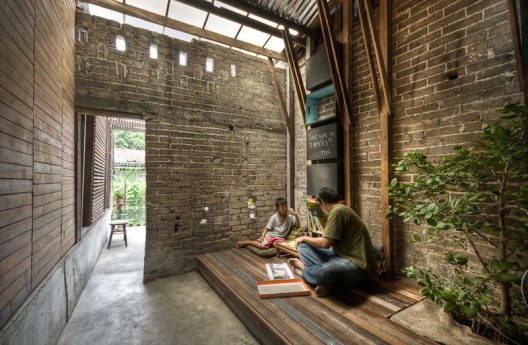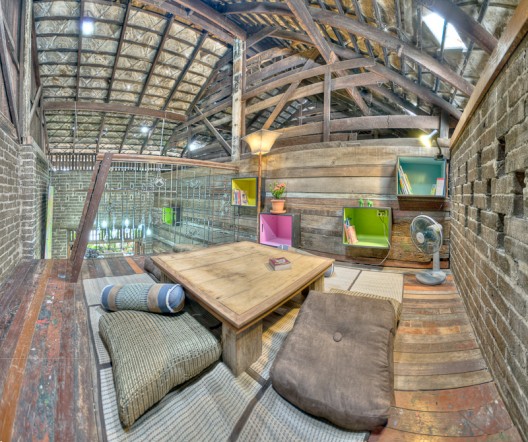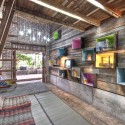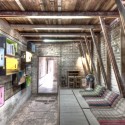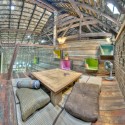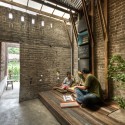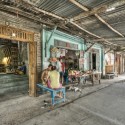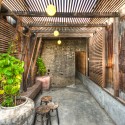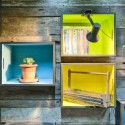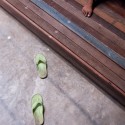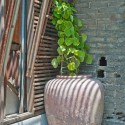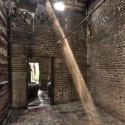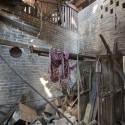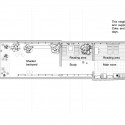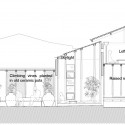Architects: TYIN Tegnestue
Location: Min Buri, Bangkok
Collaborator: CASE Studio Architects
Project team: Pasi Aalto, Andreas Grøntvedt Gjertsen, Yashar Hanstad, Magnus Henriksen, Erlend Bauck Sole
Client: Old Market Community
Project: Community house
Cost: 27,000 NOK
Project year: March 2009 – May 2009
Photographs: Pasi Aalto
TYIN tegnestue is a non-profit organization working humanitarian through architecture. TYIN is run by five architect students from NTNU and the projects are financed by more than 60 Norwegian companies, as well as private contributions.
Through the course of the last year TYIN has worked with planning and constructing small scale projects in Thailand. We aim to build strategic projects that can improve the lives for people in difficult situations. Through extensive collaboration with locals, and mutual learning, we hope that our projects can have an impact beyond the physical structures.The Old Market Library is built in a 100 years old market building. The section for the library is 3×9 meter, with a back yard facing a small canal. The roof and walls were in poor condition and it was important that new elements in the building supported themselves, without attaching to the old structures.
Project description
The high ceiling in the main room introduced the building a loft that creates a more intimate situation both below and above. The library is divided into two zones along its length; one side lets you pass through the building along the book wall, while the other is for reading and other calm activities.
Beyond the main room is a smaller space, the study. An old toilet in the corner serves as a bed for a small tree, that hopefully will have good fertilization in the years to come. In the back yard a pergola is constructed to protect against the blazing sun. Jasmine and climbing plants are placed in some large ceramic pots.
One of the main challenges for the community is the annually flooding during the rainy season. In this period the water can rise 50 cm above floor level. To retain the water would be very challenging, and the solution was rather to elevate the calmer zones to ensure that the library is usable throughout the flooded periods. Concrete sidewalls and aired connections prevents humidity and rot in the wooden constructions.
A very important principle in this project is the use of local and reused materials. The bookshelves are made of wooden boxes from one of CASEs earlier projects, while the cladding is put together using old and decayed wooden pieces, found in the immediate surroundings. The constructive materials had higher quality requirements and was bought at a local secondhand wood shop.
The Min Buri Old Market Community was once a commercial center for the area, but a fire in the late nineties caused the market activities to move across the canal. In recent years the community has diminished from a lively origo into an almost slum-like area. The land rights are uncertain and partly because of this the inhabitants are reluctant to invest in their houses. The people of The Old Market Community belong to a large group called Urban Poor.
Urban Poor is a term used to describe those who do not enjoy security of tenure and have limited access to services like health, water, sanitation, housing, education, and/or employment. Even though many of the people in Min Buri have an income, they are suffering from the high cost of living in urban areas as the demands of an accommodationis higher as the density grows. The urban poor, in areas like Min Buri, are in many regards a group left out of the socialand humanitarian support systems.
For TYIN it is not only the building of a library that is important, but also that the efforts made will affect the bigger scale. Through the use of local, inexpensive materials we have tried to show that this is something the inhabitants of the community can do by their own initiative, using their own resources. The aim of the library project is to strengthen the passion in the neighborhood that eventually can contribute to a positive development in the area.
Involve the inhabitants actively throughout the whole process. Initially we mapped the needs in the community by holding regular meetings. The meetings ranged from drawing and building models to cleaning garbage by the playground. Aside from getting to know the people we wanted create an awareness around the wishes and challenges in the community. As part of a survey we interviewed people in the area to learn about their views on the community, its past, present and future. Through this we got a deeper understanding of the situation the people here live in.
It was not always easy to get everyone involved, especially with the adults this proved difficult in the beginning, but when the project became more tangible and real, this changed. When the construction got started we soon had a regular group that worked with us every day. Through this process they got a personal attachment to the library, something we feel is a premise for the library to function in the long term.
- floor plan
- section
